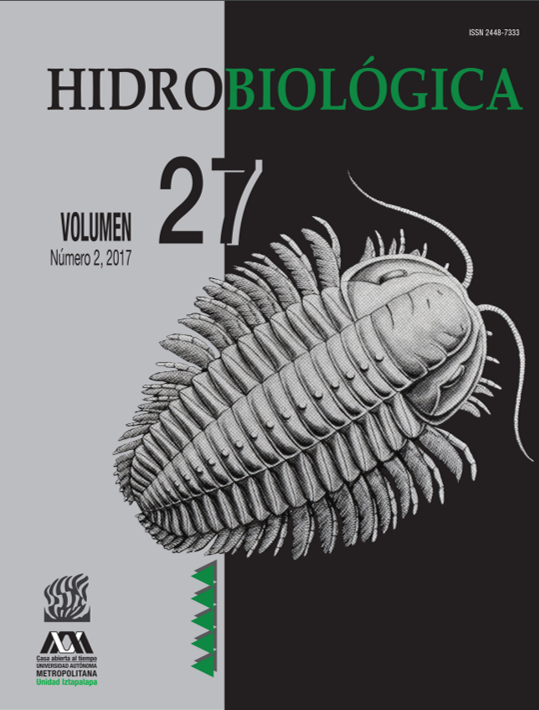Heavy-metal contents in oysters (Crassostrea gigas) cultivated on the southeastern coast of the Gulf of California, Mexico
DOI:
https://doi.org/10.24275/uam/izt/dcbs/hidro/2017v27n2/GarciaPalabras clave:
Aquaculture, bioaccumulation, Japanese oyster, metal toxicity, pollution.Resumen
Background. For its flesh and flavor, the Pacific oyster Crassostrea gigas is cultivated worldwide, but as filter feeders, this bivalve bioaccumulates heavy metals from different pollution sources, rendering them unsafe for human consumption. Goals. We carried out this study to assess the heavy metal concentrations in cultivated oysters from a farm located on the southeastern coast of the Gulf of California during 2011. Methods. Oyster samples were analyzed monthly (March- December 2011) for cooper (Cu), cadmium (Cd), chromium (Cr), nickel (Ni), lead (Pb), zinc (Zn), arsenic (As), and mercury (Hg). Results. The mean values (?g g-1, dry weight) for each metal were Cu = 51.42 ± 25.92, Cr = 24.97 ± 32.38, Cd = 13.84 ± 4.22, Ni = 10.26 ± 12.18, Pb = 2.18 ± 1.28, As = 0.37 ± 0.08, Zn = 267.42 ± 92.29, and Hg = 0.02 ± 0.01.
Conclusions. The results suggest that metal burdens could be influenced by anthropogenic activities such as agriculture and aquaculture surrounding the culture zone. Cu, Cr, Cd, and Pb levels (?g g-1, fresh weight) were above the maximum permissible values and thus pose a threat to human health. Metal concentrations must be monitored periodically.
Descargas
Publicado
Cómo citar
Número
Sección
Licencia
Los autores/as que publiquen en esta revista aceptan las siguientes condiciones:
De acuerdo con la legislación de derechos de autor, HIDROBIOLÓGICA reconoce y respeta el derecho moral de los autores, así como la titularidad del derecho patrimonial, el cual será cedido a la revista para su difusión en acceso abierto.
Publicar en la revista HIDROBIOLÓGICA tiene un costo de recuperación de $500 pesos mexicanos por página en blanco y negro (aproximadamente 29 dólares americanos) y $1000 pesos por página a color (aproximadamente 58 dólares americanos).
Todos los textos publicados por HIDROBIOLÓGICA sin excepción se distribuyen amparados bajo la licencia Creative Commons 4.0Atribución-No Comercial (CC BY-NC 4.0 Internacional), que permite a terceros utilizar lo publicado siempre que mencionen la autoría del trabajo y a la primera publicación en esta revista.
Los autores/as pueden realizar otros acuerdos contractuales independientes y adicionales para la distribución no exclusiva de la versión del artículo publicado en HIDROBIOLÓGICA (por ejemplo incluirlo en un repositorio institucional o publicarlo en un libro) siempre que indiquen claramente que el trabajo se publicó por primera vez en HIDROBIOLÓGICA.
Para todo lo anterior, el o los autor(es) deben remitir el formato de Carta-Cesión de la Propiedad de los Derechos de la primera publicación debidamente requisitado y firmado por el autor(es). Este formato se puede enviar por correo electrónico en archivo pdf al correo: enlacerebvistahidrobiológica@gmail.com; rehb@xanum.uam.mx (Carta-Cesión de Propiedad de Derechos de Autor).
Esta obra está bajo una licencia de Creative Commons Reconocimiento-No Comercial 4.0 Internacional.


